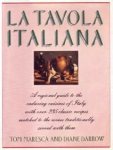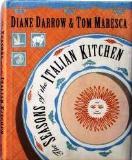 You might think some computer virus had ridiculously scrambled the words of my title above. But no: That’s the name of a new-to-me Thai dish that I made this week. I found the recipe in The Original Thai Cookbook, by Jennifer Brennan. A 1981 paperback, with much interesting historical, cultural, and culinary information about Thailand, it bills itself as “the first, complete, authentic, Thai cookbook published in America.”
You might think some computer virus had ridiculously scrambled the words of my title above. But no: That’s the name of a new-to-me Thai dish that I made this week. I found the recipe in The Original Thai Cookbook, by Jennifer Brennan. A 1981 paperback, with much interesting historical, cultural, and culinary information about Thailand, it bills itself as “the first, complete, authentic, Thai cookbook published in America.”
The recipe’s English title is Fried Pork and Long Beans. I’d have given it a name with a different emphasis, because (a) it’s not what we in the West mean by frying but stir-frying, (b) it uses as much shrimp as pork, and (c) the beans are definitely the largest component. So, Stir-fried Green Beans with Pork and Shrimp. By any name, it’s a good dish and very easy to make.
.
.
Acknowledging the limited availability of Chinese “long beans” in American markets, the recipe promptly allows using conventional green beans, which I did. And, as is truly essential for the speed of stir-frying, I measured, prepped, and set out all my ingredients before beginning to cook. In addition to the shrimp, beans, and pork, here’s garlic, nam pla (Thailand’s ubiquitous fish sauce), granulated sugar, freshly ground black pepper, and cooking oil.
.
.
Into the hot, oiled wok went first the garlic, just long enough to color; next the pork, for a few minutes to sear and seal.
.
.
At that point I had to make a change in the recipe’s stir-frying sequence. The shrimp were to have gone in next, for one minute, and finally the long beans, for only two minutes. I knew that wouldn’t be enough time for my green beans to soften, so I tossed them in with the browning pork and gave them three more minutes together before adding the shrimp.
.
.
Even my shrimp took more than one minute to lose their translucency. No size was specified for them, so possibly mine were larger than anticipated by the recipe. However, they still didn’t take long, and I was soon able to stir in the fish sauce, sugar, and pepper to finish the dish. I must admit, the green beans were still almost raw – very firm and squeaky – but that really wasn’t too bad. In fact, it may have been ethnically authentic. They made a nice textural contrast with the other ingredients.
.
.
What really completed the dish was the nam pla. On its own, this liquid from salted and fermented anchovies, much like the garum of ancient Rome, is extremely pungent – not to say stinky. But mixing with other ingredients here moderated its intensity and delivered a pleasing dose of umami, giving the dish a deliciously different set of flavors from my more customary Western cooking style. I must try it in other Thai recipes.









